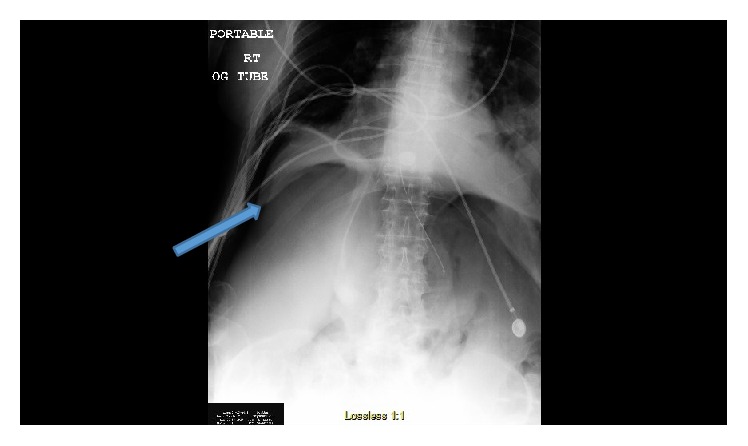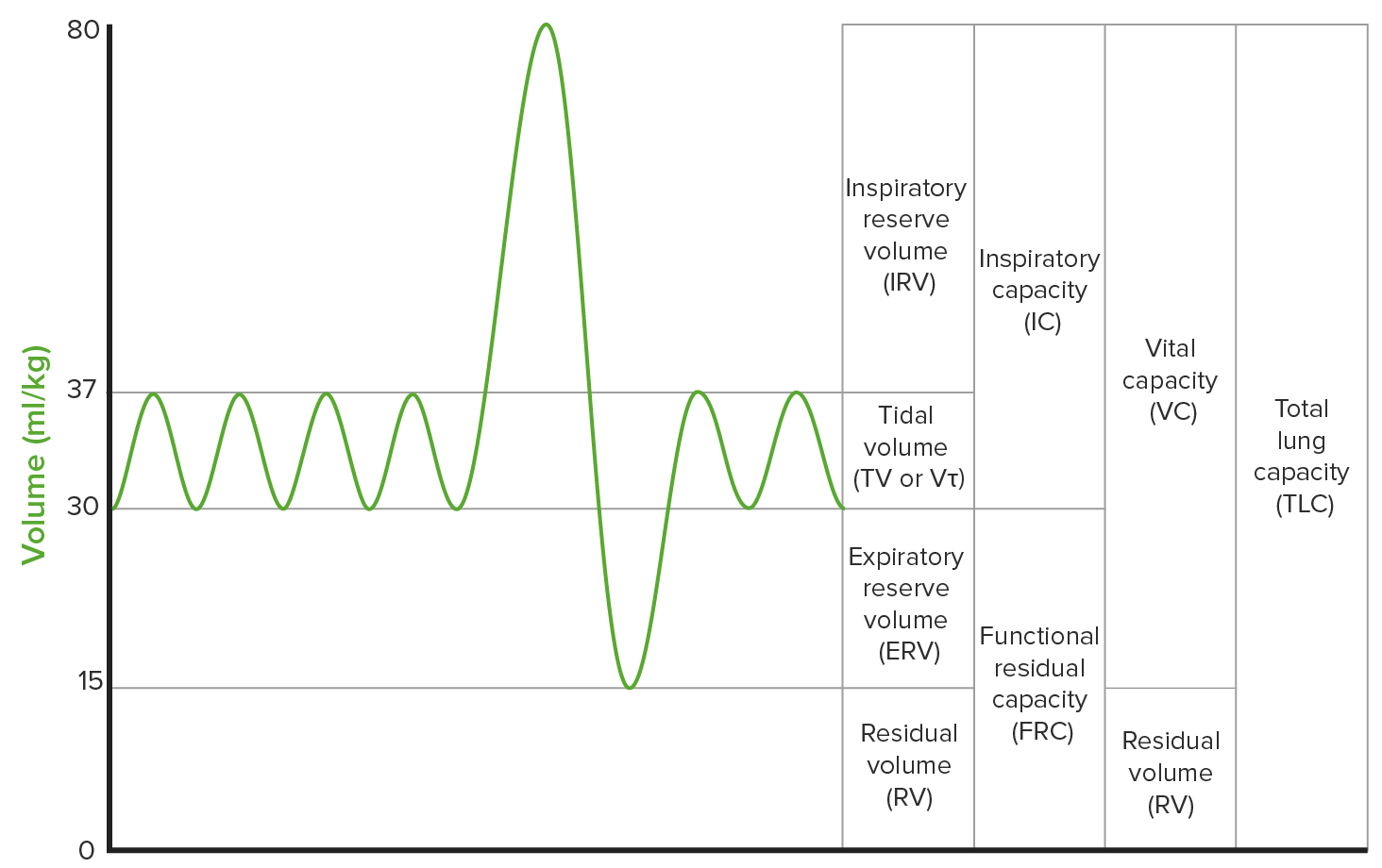Playlist
Show Playlist
Hide Playlist
Obstructive Lung Disease: Areas
-
Slides ObstructiveLungDisease RespiratoryPathology.pdf
-
Reference List Pathology.pdf
-
Download Lecture Overview
00:01 Let's begin with some of these areas. 00:03 Take a look at where area 9 is. Next, asthma. Interesting. Where is this area 9? It’s outside of the shaded green region. What does that mean? Well, in our topic as we further get into or dive into asthma, I will then walk you through what it means for an asthma patient to be outside of the box or inside or should I say the shaded green? Either outside the shaded green or inside the shaded green. Inside the shaded green would be a patient who has asthma who then shares with other COPD's, the symptoms of COPD. So, area 9 demonstrates asthma whose airflow obstruction is completely reversible and therefore, not considered to be COPD. Is that clear? Current day practice, make sure that you are clear about your definition of COPD and as to how if asthma was completely reversible and it stays out of the definition of COPD. Thus, may be virtually impossible to differentiate these asthmatics from chronic bronchitis and emphysema patients who partially have reversible airflow obstruction with airway hyperactivity. Now, what this referring to is take a look at emphysema and chronic bronchitis here. I want you to pay attention to real quick, number 1 and number 2, not truly highlighted yet, but you can see that you are outside of the green shaded box or area. So therefore, it is quite possible that those patients that are asthmatics in which are completely reversible might also be sharing and could actually be experiencing issues of chronic bronchitis or emphysema being outside that box. Is that clear? So therefore, to differentiate between the three diseases of COPD or non-COPD tends to be impossible or incredibly difficult. 02:08 Areas 6, 7 and 8, take a look at where you are. You are in the green shaded area. By definition, this is COPD. You are going to have severe airflow limitation, especially with exhalation. In addition to that, you are looking for a patient who is now progressing into something more severe. These are unremitting asthmatics. What does that mean? It means that there isn’t complete reversibility of the disease. In addition, you will find that the asthma here, which is the big circle is now sharing symptoms with whom? I want you to focus more upon number 6. Area 6 is chronic bronchitis. And often times, those are asthmatics, often times will have a history of chronic bronchitis as well. Now, the area 8 could overlap the diagnosis of chronic bronchitis and emphysema in a patient who is asthmatic. So, you are seeing here that overall these three very much share overlapping signs and symptoms. Ultimately, airflow obstruction. Your FEV1 to FVC ratio, depressed. Your loop spirometry, upon exhalation, the second half will show you what? A scalloped portion. 03:31 Take a look at area 6. So, this is what I was referring to and this is what you are paying attention to. Represents the diagnosis of asthmatic bronchitis. So, in the US, often times, in clinical practice, your patients that are walking in will have asthmatic bronchitis. Now, well, that should make perfect sense because are you not having a plug formation in asthma? What is that plug made up of? Mucous. Is it a possibility that a patient with asthma with this mucous plug is having productive cough over a three month period consecutively over a period of two years? Sure. So, asthmatic form of COPD who are exposed to chronic smoke irritants. 04:17 Move on. What about area 5? Area 5 is chronic bronchitis and emphysema. So now, take a look, please. You are outside of the circle of asthma. That is not a diagnosis. Area 5, often times this is what you are going to find in your clinical practice, beware of this when you read clinical vignettes and questions. Many of your patients will be sharing both of the symptoms and signs of chronic bronchitis and emphysema. Say they might have the cough like chronic bronchitis and at the same time, they were having emphysematic type of disease process taking place in the parenchyma. 04:53 Area 1, 2 and 11. Identify these. Good. Now, you're once again, you are outside the shaded box and so, therefore, these individuals are reversible. Patients with chronic bronchitis or emphysema without airflow obstruction, not classified as having COPD. Now, at some point, could they result in it? Sure. I would spend a little bit of time making sure that you are comfortable with the signs and symptoms. Your priority should be COPD in the green shaded box. Your priority should be the common diagnosis that you find in the US. 05:28 Number 5 is what you are paying attention to that we walked through. Number 6 is something that you are paying attention to. Number 9 you do want to pay attention to because when we dive into asthma further, from a pathologic point of view, then maybe your patient is completely reversible. By definition, would not be in the shade of COPD and would be really an asthmatic who is, well, easily treated with something like a beta-2 agonist.
About the Lecture
The lecture Obstructive Lung Disease: Areas by Carlo Raj, MD is from the course Obstructive Lung Disease: Basic Principles with Carlo Raj.
Included Quiz Questions
Which of the following statements regarding the manifestation of COPD is FALSE?
- Chronic bronchitis and emphysema can never occur together.
- A completely reversible asthma does not fall into the realm of COPD.
- Patients with unremitting asthma are classified as having COPD.
- A patient can have a combination of asthmatic bronchitis.
- Patients with emphysema or chronic bronchitis without airflow obstruction are not classified as having COPD.
Patients with which of the following conditions are known as "pink puffers"?
- Emphysema
- Chronic bronchitis
- Asthma
- Lung abscess
- Tuberculosis
Patients with which of the following conditions are known as "blue bloaters"?
- Chronic bronchitis
- Emphysema
- Asthma
- Lung abscess
- Tuberculosis
Customer reviews
2,8 of 5 stars
| 5 Stars |
|
1 |
| 4 Stars |
|
1 |
| 3 Stars |
|
0 |
| 2 Stars |
|
0 |
| 1 Star |
|
2 |
Enjoyed the lecture so far. Sometimes a little complex, but once I watched it a couple of times, it really sunk in and now I feel like I have more than just a simplistic understanding of the subject
this isnt how you see it in books or in real life just made up way to complicate simple concepts
I can understand why some find this confusing but I think the Venn diagram makes a lot of sense when you do finally understand it!
Unclear content and so weird method of teaching, there are many alternative ways that could be used to reach the idea more simple





